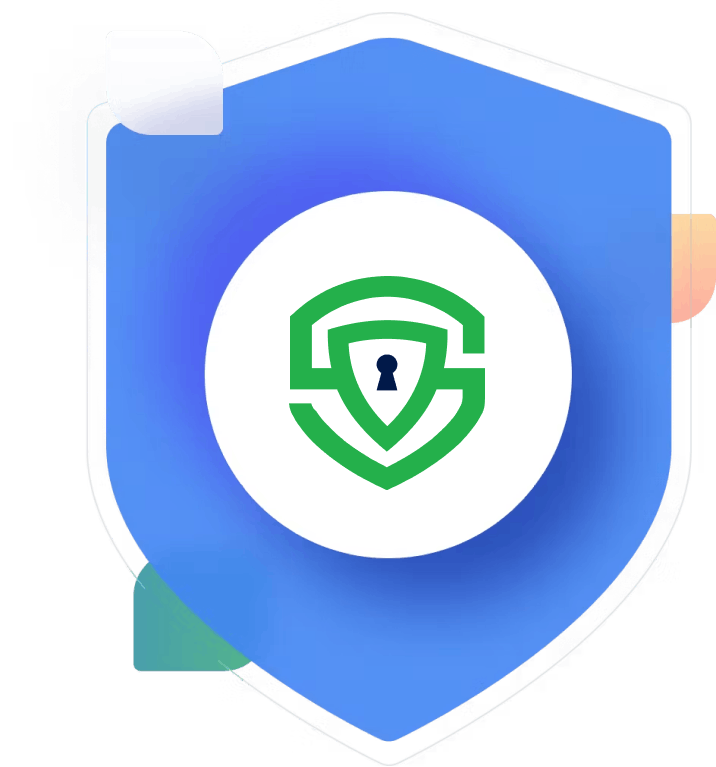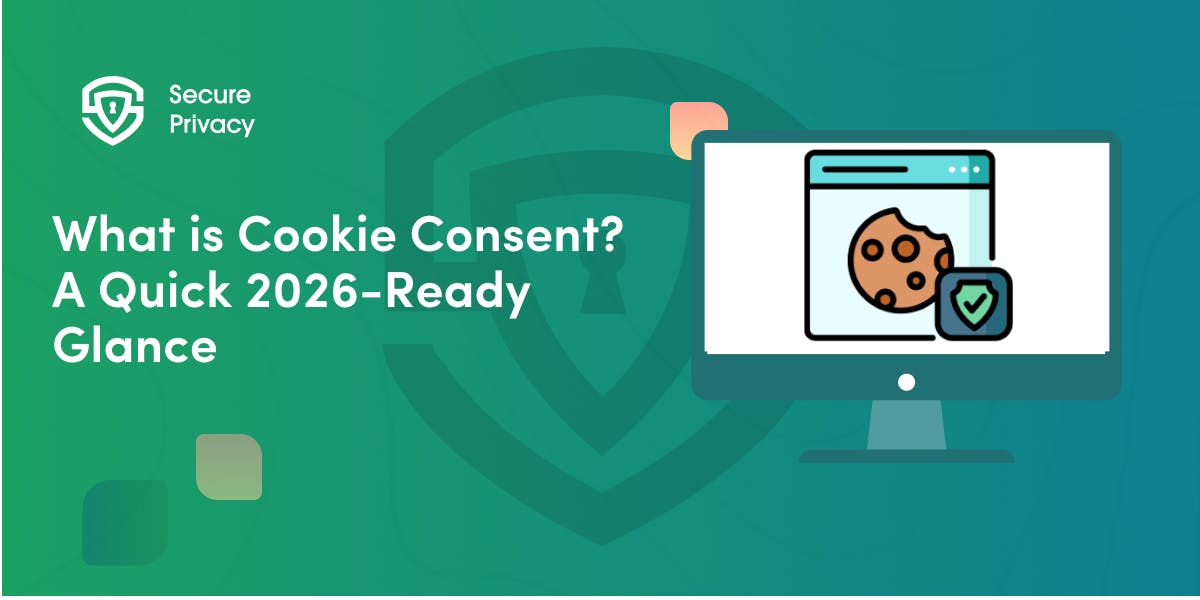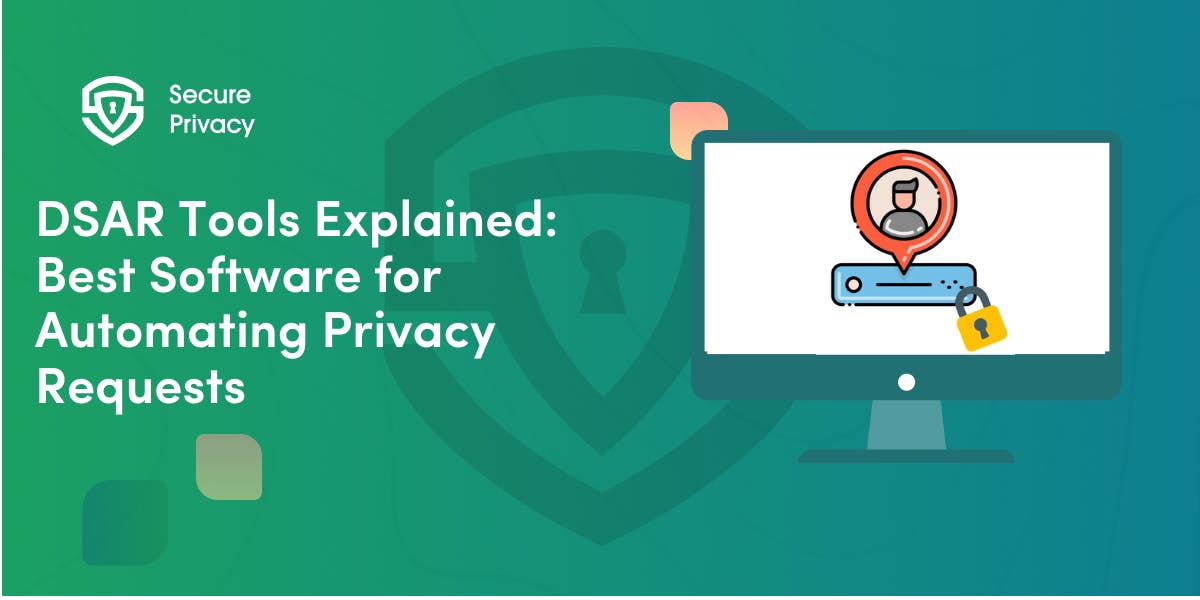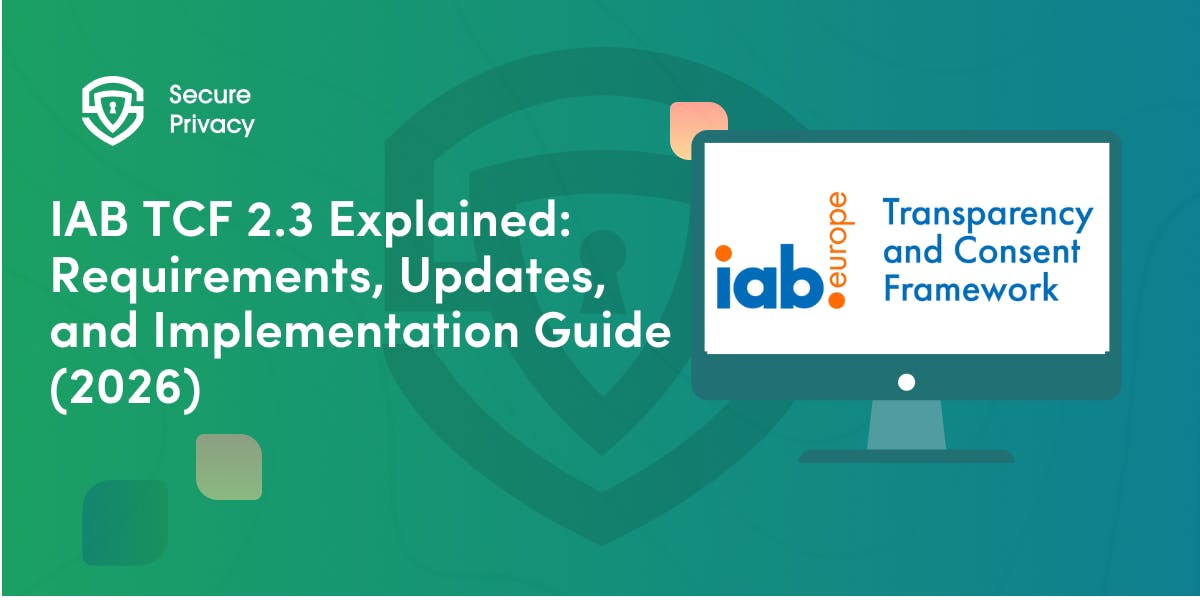Multi-Entity Privacy Governance Suites: Manage Global Compliance Across All Your Entities
Your privacy program is collapsing under the weight of organizational complexity. As Chief Privacy Officers manage dozens of subsidiaries, hundreds of policies, and multiple jurisdictions simultaneously, traditional single-entity privacy tools create dangerous compliance gaps that expose organizations to massive regulatory penalties.
Multi-entity privacy governance suite solutions address the unique challenges of complex organizations by providing centralized oversight with distributed execution capabilities. In this comprehensive guide, you'll discover what constitutes a true multi-entity privacy platform, identify the critical features your organization needs, and learn how to evaluate vendors that can scale with your global compliance requirements.

Prioritizing user privacy is essential. Secure Privacy's free Privacy by Design Checklist helps you integrate privacy considerations into your development and data management processes.
The Complexity Crisis in Global Privacy Governance
Modern organizations operate across complex structures involving subsidiaries, joint ventures, business units, and jurisdictions — each with unique regulatory requirements and operational constraints. Managing privacy compliance across these entities using traditional tools creates operational inefficiencies and compliance risks that grow exponentially with organizational complexity.
Privacy governance for complex organizations is increasingly challenging. A single multinational corporation might manage GDPR compliance for European operations, CCPA requirements for California activities, LGPD obligations in Brazil, and emerging state privacy laws across multiple U.S. jurisdictions — all while maintaining separate policies for different business units and subsidiaries.
Organizations report spending 40% more on compliance activities when using disconnected tools, while audit failures increase by 65% due to inconsistent documentation and policy management across entities. Regulatory authorities are increasingly focusing on organizational accountability, making centralized governance indispensable for demonstrating comprehensive compliance.
What Is a Multi-Entity Privacy Governance Suite?
A multi-entity privacy governance suite is a centralized platform designed to manage privacy compliance across multiple legal entities, business units, and jurisdictions while maintaining appropriate separation and customization for each entity's specific requirements.
Unlike traditional privacy management tools that treat organizations as single entities, multi-entity privacy governance suite platforms provide sophisticated architecture that enables logical entity separation with shared governance frameworks, jurisdictional compliance automation, centralized policy management with entity-specific customization, and cross-entity reporting and analytics.
Organizations That Demand Multi-Entity Privacy Support
Global Enterprises with Distributed Operations
Multinational corporations with subsidiaries across multiple jurisdictions require DPO tools for global compliance that can manage complex organizational structures. These organizations need platforms that handle different legal entities while providing unified governance and reporting capabilities.
Franchise and Holding Company Models
Franchise organizations and holding companies face unique challenges where individual entities maintain operational independence while requiring consistent privacy standards and oversight capabilities.
Public Sector and Healthcare Networks
School districts, hospital networks, and government agencies operate multiple entities under unified governance structures while facing complex regulatory requirements including FERPA, HIPAA, and sector-specific privacy obligations.
Agencies Managing Client Compliance
Marketing agencies, law firms, and consulting organizations managing privacy compliance for multiple clients require centralized privacy operations that maintain strict separation between client data while enabling efficient service delivery. These organizations need multi-entity privacy governance suite capabilities that support professional service delivery models.
Essential Features of Multi-Entity Privacy Governance Suites
Entity-Level Data Processing Records (RoPA)
Sophisticated multi-entity privacy governance suite platforms provide separate Records of Processing Activities for each entity while enabling global visibility and reporting. This capability ensures jurisdictional compliance while facilitating comprehensive oversight through advanced multi-entity privacy governance suite architecture.
Role-Based Access Control by Entity
Advanced access control systems ensure that users see only information relevant to their entity and role while providing global administrators with comprehensive oversight capabilities. This approach maintains data separation while enabling efficient management.
Policy Version Control and Distribution
Privacy governance for complex organizations requires sophisticated policy management that maintains consistency while accommodating entity-specific requirements and jurisdictional variations.
Cross-Entity Vendor Risk Management
Vendor risk assessment becomes complex when suppliers serve multiple entities with different risk profiles and regulatory requirements. Multi-entity platforms provide sophisticated vendor management that addresses these complexities.
Unified Incident Response and Breach Management
Privacy incidents affecting multiple entities require coordinated response capabilities that address different notification requirements and timelines across jurisdictions while maintaining comprehensive documentation.
Signs Your Organization Needs a Multi-Entity Suite
Operational Inefficiency Indicators
Spreadsheet Proliferation: Managing multiple spreadsheets for Records of Processing Activities across jurisdictions indicates the need for centralized platform management. Manual tracking becomes unsustainable as organizations scale.
Duplicated Workflows: When DSAR or DPIA workflows are duplicated across tools and entities, organizations waste resources while creating compliance inconsistencies that increase regulatory risk.
Limited Visibility: Chief Privacy Officers lacking central audit visibility across all entities cannot effectively demonstrate organizational accountability or identify systemic compliance issues.
Compliance Risk Factors
Inconsistent Policy Updates: When policy changes don't propagate consistently across all entities, organizations create compliance gaps that regulatory authorities view as systematic failures rather than isolated incidents.
Vendor Contract Scatter: Privacy vendor contracts scattered across departments and entities prevent comprehensive risk assessment and create gaps in data processing accountability.
Acquisition Integration Challenges: When acquisitions or expansions introduce jurisdictional complexity that existing tools cannot accommodate, organizations face integration delays that expose them to compliance violations. Modern multi-entity privacy governance suite platforms address these integration challenges systematically.
Implementation Best Practices for Multi-Entity Privacy Governance
Governance Model Selection
Organizations must choose between centralized, federated, or hybrid governance models based on their structure and regulatory requirements.
Centralized Model Benefits:
- Unified policy management and consistent compliance standards
- Simplified audit processes and regulatory relationship management
- Economies of scale in privacy program development and maintenance
- Clear accountability structures and decision-making processes
Federated Model Advantages:
- Entity autonomy for business-specific privacy requirements
- Local expertise application for jurisdictional compliance
- Reduced organizational change management challenges
- Flexibility for diverse business unit requirements
Hybrid Model Optimization:
- Central oversight with local execution flexibility
- Standardized frameworks with entity-specific customization
- Shared resources and expertise across entities
- Balanced accountability between global and local teams
Technology Architecture Considerations
Multi-Tenant vs. Multi-Instance Deployment decisions depend on data isolation requirements and regulatory constraints. Multi-tenant architectures provide efficiency benefits while multi-instance deployments offer enhanced security separation.
Data Residency and Localization requirements must be addressed through platform selection and deployment strategies that accommodate jurisdictional data processing restrictions while enabling cross-border analytics.
Integration Complexity planning ensures that multi-entity privacy governance suite platforms integrate effectively with diverse technical stacks across entities while maintaining security and compliance standards. This integration approach maximizes multi-entity privacy governance suite value realization.
Vendor Evaluation Framework
Technical Capability Assessment
Entity Management Questions:
- Can the platform manage policies, RoPAs, and DSARs by entity while providing aggregated reporting?
- Are user permissions customizable per entity with appropriate segregation controls?
- Can workflows be cloned or templated for rapid scaling to new entities?
- How does cross-entity reporting work for executive dashboard requirements?
Compliance Support Evaluation:
- Does the vendor support international privacy laws out of the box?
- Are regulatory updates automatically applied to relevant entities?
- Can the platform accommodate complex organizational structures and relationships?
- Is onboarding specifically designed for multi-entity scenarios?
Business Value Analysis
Operational Efficiency Metrics:
- Projected reduction in compliance management time across entities
- Automation capabilities for routine privacy operations
- Consolidation benefits for vendor management and contracts
- Audit efficiency improvements through centralized documentation
Risk Mitigation Assessment:
- Reduction in compliance gaps through standardized processes
- Improved incident response coordination across entities
- Enhanced regulatory relationship management
- Demonstration of organizational accountability to authorities
How Secure Privacy Enables Multi-Entity Success
Secure Privacy provides comprehensive multi-entity privacy governance suite capabilities specifically designed for organizations requiring efficient, scalable privacy management across multiple entities.
Multi-Site Architecture: Native support for multiple sites, subsidiaries, and client organizations with appropriate data separation and access controls. Each entity maintains its own privacy program within a unified management framework delivered through our comprehensive multi-entity privacy governance suite.
Integrated Privacy Operations: Complete suite of privacy management tools including RoPA generation, DPIA workflows, DSAR processing, and policy management designed to work seamlessly across multiple entities.
Flexible Reporting and Analytics: Entity-level reporting with global aggregation capabilities enabling both local compliance management and executive oversight through comprehensive dashboards and audit trails.
White-Label Capabilities: Full white-label support for agencies and service providers managing client privacy compliance, enabling professional service delivery without revealing underlying technology providers.
Scalable Onboarding: Rapid entity onboarding through template-based privacy program deployment that can be customized for specific entity requirements while maintaining global consistency. Our multi-entity privacy governance suite enables efficient scaling across organizational growth.
Frequently Asked Questions About Multi-Entity Privacy Governance Suites
Q: What makes a multi-entity privacy governance suite different from standard privacy management platforms?
A: A multi-entity privacy governance suite provides logical separation between entities while enabling centralized oversight and governance. Unlike standard platforms that treat organizations as single entities, multi-entity suites support complex organizational structures with entity-specific compliance requirements and consolidated reporting.
Q: How do multi-entity suites handle different regulatory requirements across jurisdictions?
A: Advanced multi-entity privacy governance suite platforms automatically apply appropriate regulatory frameworks based on entity location and operations. They maintain jurisdiction-specific compliance templates while enabling global policy management and cross-border data transfer monitoring.
Q: Can privacy governance for complex organizations be implemented without disrupting existing entity operations?
A: Yes, modern platforms support phased implementation approaches that minimize operational disruption. They provide migration tools, template-based onboarding, and change management support to ensure smooth transitions while maintaining compliance continuity.
Q: What's the typical ROI for implementing a multi-entity privacy governance suite?
A: Organizations typically see 35% decreases in total compliance costs and up to 75% productivity improvements through automation. The ROI includes reduced manual effort, improved audit efficiency, and decreased compliance risk across all entities.
Q: How do DPO tools for global compliance support different organizational structures?
A: Modern DPO tools for global compliance provide flexible architecture supporting subsidiaries, joint ventures, franchise models, and holding company structures. They offer configurable access controls, reporting hierarchies, and governance frameworks that adapt to organizational needs.
Q: Can multi-entity platforms support both enterprise organizations and service providers?
A: Yes, leading platforms offer both enterprise multi-entity support for complex organizations and white-label capabilities for agencies and service providers managing client privacy compliance. The architecture supports both internal entity management and external client service delivery.
Q: What integration capabilities are essential for multi-jurisdiction privacy management?
A: Essential integrations include identity management systems for entity-based access control, enterprise resource planning systems for organizational structure mapping, and communication platforms for cross-entity collaboration and incident response coordination.
Q: How do these platforms handle entity acquisitions and organizational changes?
A: Advanced platforms provide rapid onboarding capabilities through template-based privacy program deployment, automated entity relationship mapping, and flexible architecture that accommodates organizational changes without requiring platform reconfiguration.
Building Scalable Privacy Operations Across Entities
Multi-entity privacy governance suite implementation represents a strategic investment in organizational resilience and compliance sustainability. As privacy regulations continue expanding globally and organizational complexity increases, centralized governance with distributed execution becomes essential for maintaining competitive advantage.
The leading platforms provide comprehensive solutions that balance global oversight with local autonomy, enabling organizations to demonstrate accountability while maintaining operational efficiency. Success requires careful evaluation of governance models, technology architecture, and vendor capabilities aligned with long-term organizational objectives.
Ready to Transform Your Multi-Entity Privacy Governance? Discover how Secure Privacy's multi-entity platform enables seamless privacy management across all your organizational entities. Schedule a demo to see how centralized governance with entity-specific customization can simplify your complex compliance requirements while reducing risk and operational costs.
Transform privacy compliance from an organizational burden into a strategic advantage that supports growth and builds stakeholder confidence across all your entities.
Get Started For Free with the
#1 Cookie Consent Platform.
No credit card required

What is Cookie Consent? A Quick 2026-Ready Glance
Your website loads. Cookies track users. But without proper cookie consent, you're violating GDPR — risking fines up to €20 million or 4% of global revenue. Cookie consent is the legally required mechanism by which websites obtain explicit user approval before deploying non-essential tracking technologies. This requirement stems from GDPR Article 4(11) and the ePrivacy Directive, mandating that consent must be freely given, specific, informed, and unambiguous.
- Legal & News

DSAR Tools Explained: Best Software for Automating Privacy Requests
You're drowning in data subject access requests. Manual searches through dozens of systems miss regulatory deadlines and expose organizations to fines starting at $2,500 per violation. The solution? DSAR tools — purpose-built software that automates the entire process of responding to data subject access requests, from intake to delivery.
- Legal & News

IAB TCF 2.3 Explained: Requirements, Updates, and Implementation Guide (2026)
Your ad revenue dropped 40% overnight. Google stopped bidding on your inventory. Your DSP partners flagged your traffic as non-compliant. The culprit? An outdated TCF 2.2 consent string after the February 2026 enforcement deadline.
- Legal & News
- Cookie Consent
